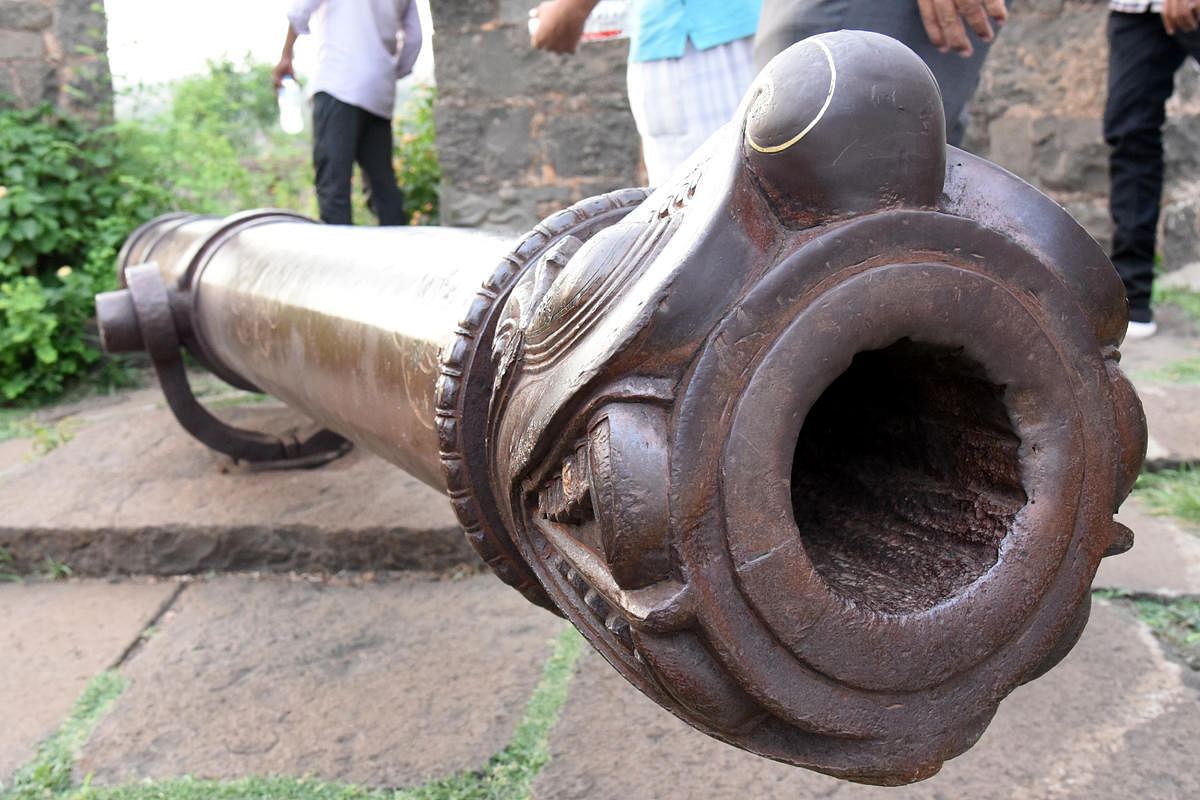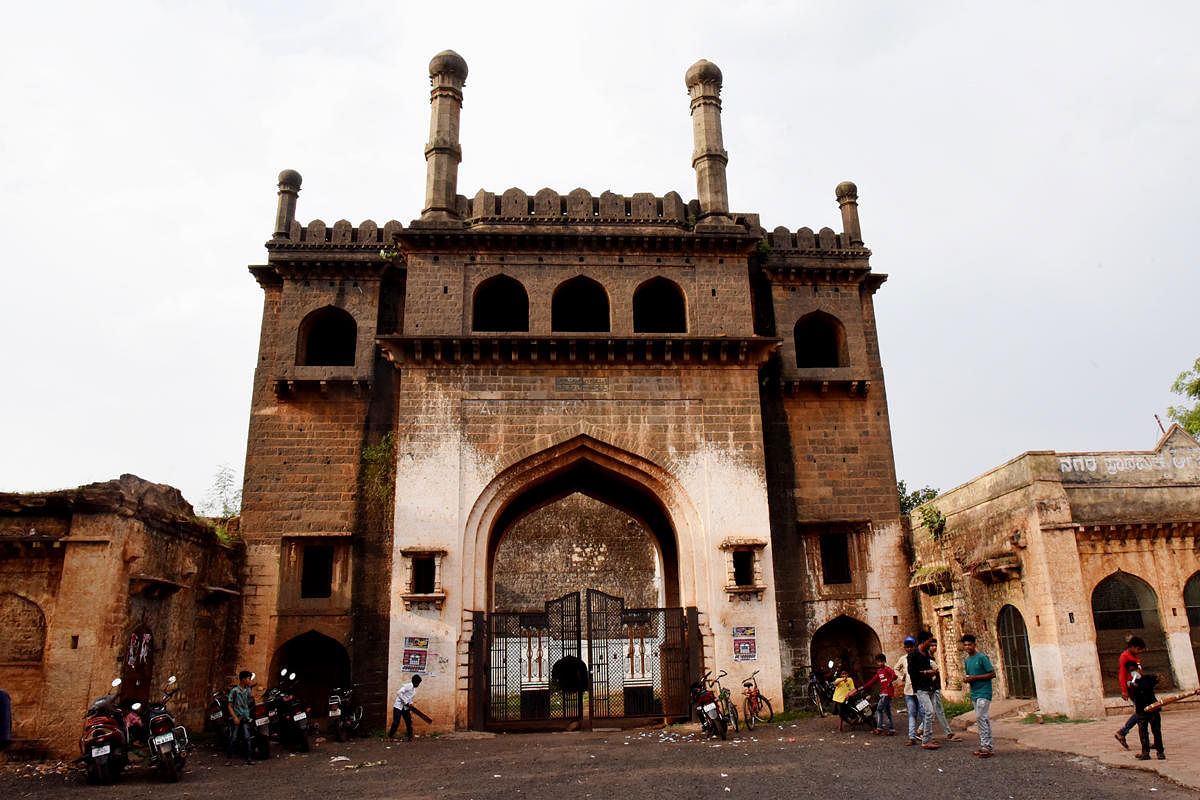

My visit to Basavakalyan in Bidar district was more enjoyable than expected. I was accompanied by my colleagues — a photographer and an artist.
Our first stop was Peer Pasha bungalow, which is a famous landmark in the town. The structure is a tiny complex with beautiful Indo-Islamic architectural monuments that stand testament to the craftsmanship of the time.
Our next destination was the Basavakalyana fort or the Kalyana fort, earlier called Kalyani. The fort is located on a hilltop. The monument has a huge Indo-Islamic style arched main entrance known as the Akhand Darwaza. It was constructed using red stone slabs. The entrance opens into a large courtyard. On the left is a wide building known as Ashur Khana where a permanent Muharram Panja (hand-like metal form) has been installed. This form is taken on procession every year in the month of Muharram.
Even these days, the 10 days of Muharram are celebrated with a spirit of togetherness involving both Hindus and Muslims. The Ashur Khana is built with the support of wooden pillars carved in simple designs.
On the front is a huge pond with a fountain. The pond is made out of black stone slabs with intricate carvings. There is also a two-storied structure beside the pond where a drum is played at least two times a day even now, especially in the morning and evening to gather the public.
To reach the upper floors, one would have to pass through seven gates and climb a number of steps. Each floor has a Persian inscription that details the rulers who captured and renovated the monument. The structure is sure to confuse newcomers.
The fort houses a number of buildings like the royal palace, Rani mahal mosque, Jain Basadi, armory, royal bathrooms, a museum, wells and ponds. All of these structures are constructed with blackstone and have fountains with large courtyards. Though the fort is located in a hilly area, wells and ponds still spring water to date.
Every monument inside the fort speaks of the period of its rulers. Paintings, stucco-work designs, and stone carvings can be seen decorating the structures.
Capital of the Chalukyas
Vijnaneswara, the author of the legal commentary Mitakshara, was a native of Kalyani. This twelfth-century jurist flourished during the reign of Vikramaditya. An older fort was built by Chalukyas, later rulers kept the original fort, built in Basadis of Jainism style, intact.
The now-ruined palace and muddy fort can be seen from the hilltop. Many dynasties like Kalachuris, Yadavas, Khiljis, and lastly the Nizams of Hyderabad controlled the fort.
The royal emblem of Bahmani and Adil Shahi — with a tiger and elephant — is chiseled on the black stone on the upper part of the fort wall. Once you proceed on to the first gate, there is a big armory where weapons were stored.
Written information about the history of Basavakalyan is scarce. It took me a long time to trace the history of the fort. A sole exception was a book edited by HK Sherwani and PM Joshi about Medieval Deccan (1295-1724).
Two long cannons are installed on the bastions of the fort. One is made up in the style of Bahmani with multiple rings and the other one is in Nizam Shahi style, bearing an inscription in the Naksh script with intricate gold-plated Persian designs.
The cannons are in good condition. However, the fort maintenance is poor.
It was evening when we descended from the fort. We quickly toured the ancient wells while going back to Gulbarga. Each well is beautifully constructed and has inscriptions.
One of the largest well, specially constructed for elephant bath, is seen in a very good condition. Now it is under the ownership of Jagirdars. Jagirdars street is famous for its unique Havelis built in the Indo-Islamic style.